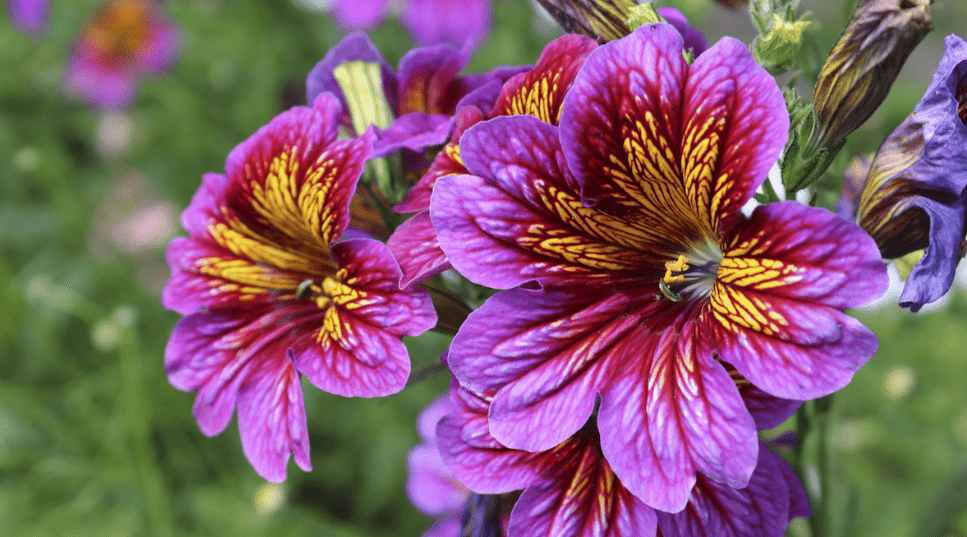
Growing Painted Tongue: Vibrant Blooms for Your Garden
If you’re a gardening enthusiast looking to add a pop of color to your garden, the Painted Tongue flower is a fantastic choice. In this post, we’ll delve into the world of this vibrant and beautiful plant, providing you with tips and advice on how to grow and care for it in your garden. With the right knowledge and care, you’ll be able to create a stunning display of colorful blooms that will brighten up your outdoor space. So, let’s dive in and explore the world of growing Painted Tongue flowers!
Table of Contents
ToggleUnderstanding Painted Tongue
A. Description of Painted Tongue: Appearance and characteristics
The Painted Tongue, also known as Salpiglossis, is a stunning annual flower that is known for its vibrant, trumpet-shaped blooms and its beautiful, variegated foliage. The flowers come in a wide range of colors, including shades of red, purple, yellow, orange, and white, creating a visually striking display in any garden. The plant itself can grow to be anywhere from 12 to 36 inches tall, making it a versatile and eye-catching addition to any garden bed or container.
B. History and origin of Painted Tongue
The Painted Tongue flower is native to South America, particularly Chile, where it grows in the wild in the Andes mountains. It was first introduced to Europe in the 1820s and has since become a popular ornamental plant in gardens around the world. Its unique and showy blooms have made it a favorite among gardeners looking to add a pop of color and interest to their outdoor spaces.
C. Different varieties of Painted Tongue
The Painted Tongue, or Salpiglossis, comes in several different varieties, each with its own unique color combinations and patterns. Some popular varieties include the “Royal Mixed” variety, which features a mix of deep, rich colors, and the “Bolero” variety, which has striking bi-colored blooms. Other varieties may have specific color combinations, such as orange and purple or yellow and red. With so many options to choose from, there is a Painted Tongue variety to suit every gardener’s taste and style.
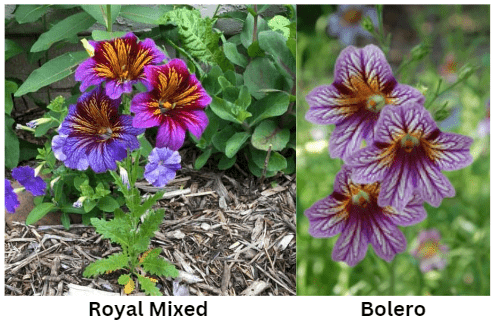
Benefits of Growing Painted Tongue
A. Aesthetic appeal and vibrant colors
The Painted Tongue plant offers many benefits for gardeners, including its aesthetic appeal and vibrant colors. The unique and showy blooms of the plant make it a favorite among gardeners looking to add a pop of color and interest to their outdoor spaces. Additionally, the different varieties of Painted Tongue offer a wide range of color combinations and patterns, allowing for endless possibilities for creating beautiful and eye-catching garden displays. Overall, the Painted Tongue plant can provide a stunning and visually appealing addition to any garden.
B. Attracting pollinators: Bees, butterflies, and hummingbirds
Another benefit of growing Painted Tongue is its ability to attract pollinators such as bees, butterflies, and hummingbirds. The nectar-rich blooms of the plant are irresistible to these beneficial insects and animals, making it a great addition to any pollinator garden. By planting Painted Tongue, gardeners can help support the local ecosystem and promote biodiversity in their outdoor spaces. Plus, the presence of pollinators can also help improve the overall health of the garden by increasing fruit and vegetable yields. Overall, the Painted Tongue plant is a great choice for gardeners looking to create a vibrant and lively outdoor environment.
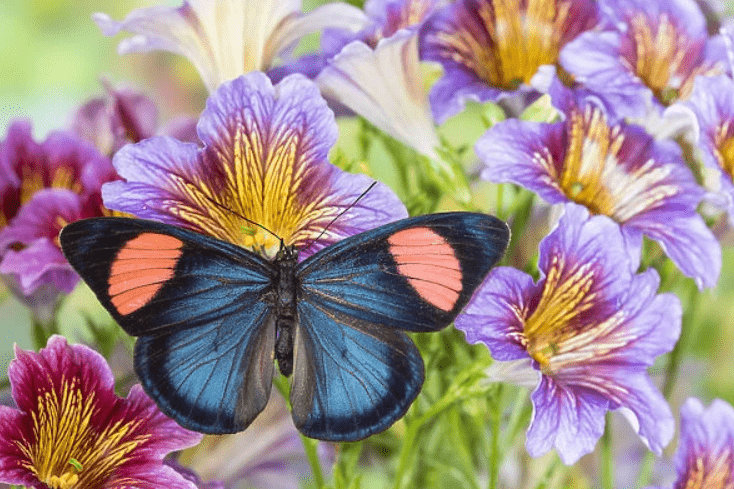
C. Versatility in garden design and container planting
The Painted Tongue plant offers great versatility in garden design and container planting. Its compact size and attractive blooms make it a versatile addition to any garden or outdoor space. It can be used as a border plant, in mixed plantings, or as a focal point in containers. Its ability to attract pollinators also adds to its versatility, as it can be used to create a vibrant and lively outdoor environment. Additionally, its low maintenance nature makes it an easy choice for both experienced and novice gardeners. Overall, the Painted Tongue plant is a great option for adding color and interest to any garden or outdoor space.
Preparing to Grow Painted Tongue
A. Ideal climate and hardiness zones
The Painted Tongue plant thrives in a variety of climates and is typically hardy in zones 9-11. It prefers full sun but can also tolerate partial shade, making it a versatile option for many different garden settings. When preparing to grow a Painted Tongue, it is important to consider the climate and hardiness zone of your specific location to ensure the plant will thrive in its environment. This plant’s adaptability to various conditions makes it a great choice for gardeners in a wide range of geographic areas.
B. Choosing the right location: Sunlight and soil requirements
When choosing a location to grow Painted Tongue, it is important to consider its sunlight and soil requirements. This plant thrives in full sun but can also tolerate partial shade, so it is important to find a location in your garden that receives adequate sunlight. Additionally, Painted Tongue prefers well-draining, nutrient-rich soil. It is important to prepare the soil by amending it with organic matter to ensure optimal growth and health of the plant. Choosing the right location with the proper sunlight and soil conditions will set the stage for a successful and vibrant garden display.
C. Soil preparation: pH level, drainage, and fertility
When preparing the soil for Painted Tongue, it is important to consider its pH level, drainage, and fertility. Painted Tongue thrives in slightly acidic to neutral soil with a pH range of 6.0-7.0. It is important to test the soil and make any necessary adjustments to ensure that it falls within this range. Additionally, Painted Tongue requires well-draining soil to prevent waterlogging and root rot. Amending the soil with organic matter, such as compost or aged manure, can improve fertility and provide the necessary nutrients for the plant to thrive. Taking these soil preparation steps will create an optimal growing environment for Painted Tongue and promote healthy and vibrant growth.
Planting Painted Tongue
A. Starting from seeds: When and how to sow seeds
When starting Painted Tongue from seeds, it is recommended to sow them in the late winter or early spring, as they require a period of cold stratification to germinate. Sow the seeds in a well-draining seed starting mix, covering them lightly with soil. Keep the soil consistently moist and place the seeds in a warm, sunny location. Once the seedlings have developed several sets of leaves, they can be transplanted into individual pots or directly into the garden. It is important to provide adequate water and sunlight to ensure healthy growth and development. With proper care, the Painted Tongue seeds will germinate and produce beautiful, colorful flowers.
B. Transplanting seedlings: Timing and process
When transplanting Painted Tongue seedlings, it is best to do so once they have developed several sets of leaves and the weather has warmed up. This is typically around late spring or early summer. When transplanting, carefully remove the seedlings from their pots or the seed starting tray, being mindful not to damage the roots. Plant them in well-draining soil in a sunny location with adequate space between each plant to allow for proper growth. Water the transplanted seedlings thoroughly and continue to provide regular watering and sunlight to promote healthy growth. With proper care, the Painted Tongue seedlings will establish themselves and produce vibrant, eye-catching flowers.
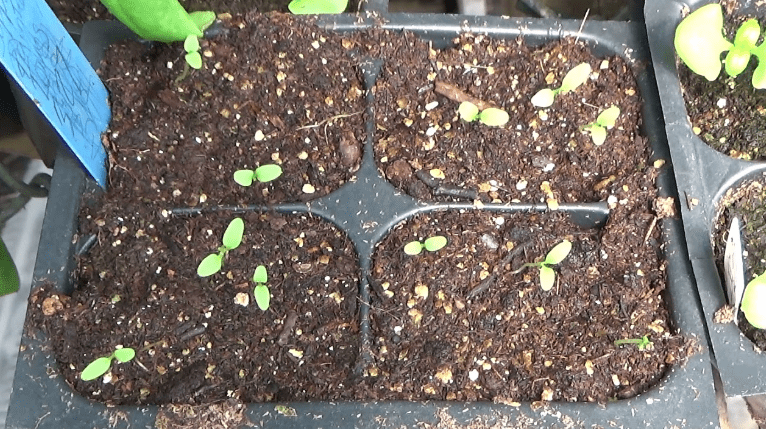
C. Plant spacing and depth
When transplanting seedlings, it is important to space them adequately to allow for proper growth. For Painted Tongue seedlings, it is recommended to space them about 8-12 inches apart to give them enough room to thrive. When planting, make sure to dig a hole that is deep enough to accommodate the root system of the seedling, usually around the same depth as the original container they were in. Gently place the seedling in the hole and fill it in with soil, making sure to firmly press the soil around the base of the plant to secure it. This will provide a stable environment for the seedling to grow and establish itself in its new location.
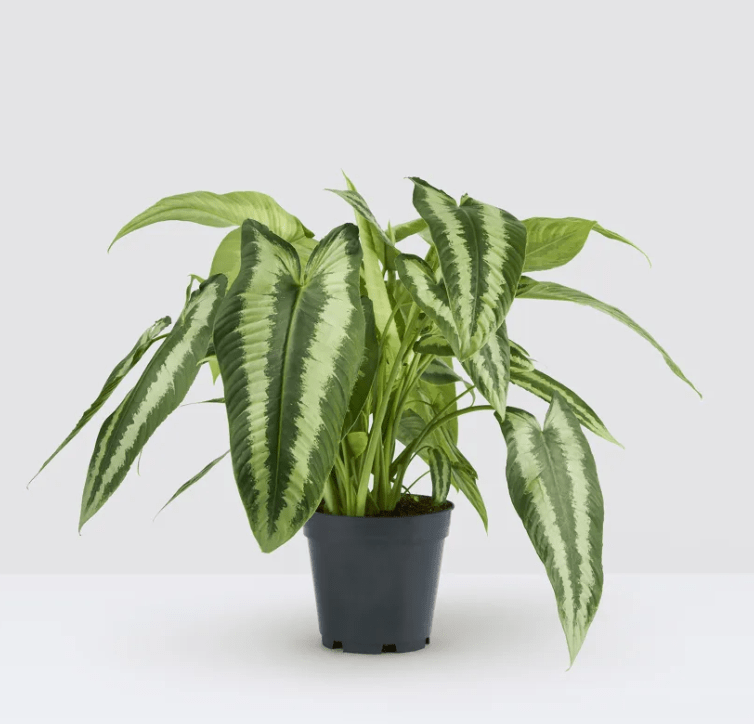
Care and Maintenance
A. Watering: Frequency and techniques
When it comes to watering Painted Tongue seedlings, it’s important to keep the soil consistently moist, but not waterlogged. This typically means watering them 1-2 times per week, depending on the climate and soil conditions. When watering, it’s best to use a gentle stream of water to avoid disturbing the soil and potentially damaging the delicate seedlings. It’s also important to water at the base of the plant to ensure the root system receives the water it needs. As the seedlings grow and establish themselves, it’s important to monitor the soil moisture and adjust the watering frequency as needed. This will help ensure the seedlings have the proper amount of water to support their growth and development.
B. Fertilizing: Types of fertilizers and application schedule
When it comes to fertilizing Painted Tongue seedlings, it’s best to use a balanced, all-purpose fertilizer. This type of fertilizer will provide the necessary nutrients for healthy growth without overstimulating the plants. The fertilizer should be applied every 4-6 weeks during the growing season, following the instructions on the product label for the correct dilution and application method. It’s important to avoid over-fertilizing, as this can lead to excessive foliage growth at the expense of flower production. By using a balanced fertilizer and following a regular application schedule, you can help ensure the health and vitality of your Painted Tongue seedlings.
C. Pruning and deadheading: Encouraging continuous blooms
Pruning and deadheading are important practices for encouraging continuous blooms in Painted Tongue plants. Deadheading, or removing faded or spent flowers, helps redirect the plant’s energy into producing new blooms instead of seed production. This can prolong the flowering period and keep the plant looking tidy.
As for pruning, it’s best to lightly trim back any leggy or overgrown stems to promote a bushier and more compact growth habit. This can be done as needed throughout the growing season.
By regularly deadheading and lightly pruning your Painted Tongue plants, you can help maintain a continuous display of vibrant blooms and keep the plants healthy and attractive.
Dealing with Pests and Diseases
A. Common pests affecting Painted Tongue
Painted Tongue plants include aphids, spider mites, and whiteflies. These pests can be controlled through methods such as spraying the plants with insecticidal soap or using natural predators like ladybugs to help manage the infestation. Regularly inspecting the plants for signs of pest infestation and taking prompt action can help prevent damage to the plants.
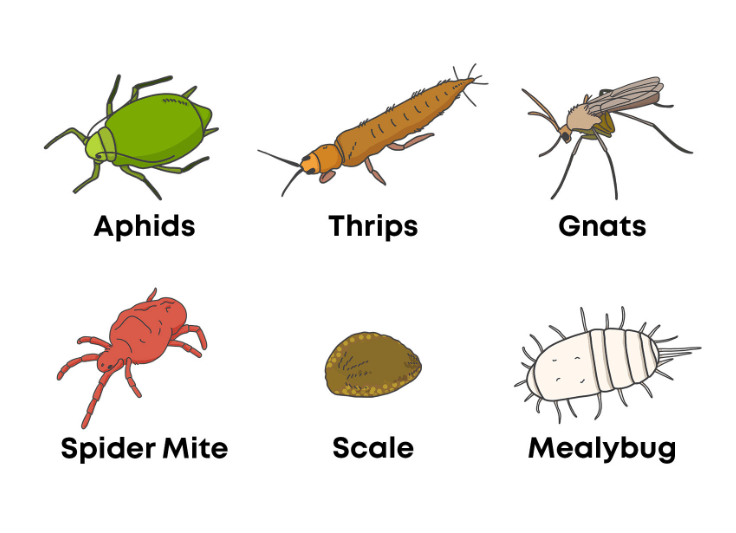
B. Disease prevention and management
Painted Tongue plants are susceptible to fungal diseases such as powdery mildew and leaf spot. To prevent these diseases, it’s important to provide good air circulation around the plants and avoid overhead watering to reduce moisture on the foliage. If signs of disease appear, remove and dispose of affected plant parts to prevent the spread of the disease. Fungicides can also be used as a last resort if the disease becomes severe. Overall, maintaining good plant hygiene and monitoring the plants for signs of pests and diseases can help keep your Painted Tongue plants healthy throughout the growing season.
C. Organic and chemical control methods
When it comes to disease prevention and management in plants, there are both organic and chemical control methods available. Organic methods include providing good air circulation, avoiding overhead watering to reduce moisture on the foliage, and removing and disposing of affected plant parts to prevent the spread of the disease. Additionally, organic fungicides can be used as a last resort if the disease becomes severe. On the other hand, chemical control methods involve the use of synthetic fungicides to prevent and manage diseases. It’s important to carefully follow the instructions and guidelines when using chemical control methods to ensure the safety of both the plants and the environment. Overall, choosing the appropriate control method depends on the severity of the disease and personal preference for organic or chemical treatments.
Companion Planting with Painted Tongue
A. Best companion plants for Painted Tongue
When it comes to companion planting with Painted Tongue, it’s important to choose plants that have similar growing conditions and can benefit each other in the garden. Some great companion plants for Painted Tongue include other heat-loving and drought-tolerant flowers such as lavender, yarrow, and Russian sage. These plants can help support each other’s growth and also attract beneficial insects to the garden. It’s best to avoid planting Painted Tongue with plants that require a lot of water or have aggressive root systems that could compete for nutrients. Overall, choosing the right companion plants can help create a healthy and harmonious garden environment.
B. Layout and design ideas
When planning the layout and design for companion planting with Painted Tongue, it’s important to consider the height, spread, and growth habits of the companion plants. For example, taller plants like Russian sage or yarrow can be placed behind or to the side of the Painted Tongue to create a layered and visually appealing garden bed. Mixing in some low-growing plants like creeping thyme or marigolds can help fill in any empty spaces and create a lush and full look. It’s also a good idea to consider the color and texture of the companion plants to ensure a cohesive and balanced garden design. Overall, thoughtful planning and consideration of the layout and design can create a beautiful and functional companion planting with Painted Tongue.
Seasonal Care Tips
A. Spring and summer care: Planting and growing
In the spring and summer, it’s important to ensure that the Painted Tongue and its companion plants are getting enough sunlight, water, and nutrients. When planting in the spring, make sure to choose a location with well-draining soil and adequate sunlight. Water the plants regularly, especially during dry periods, and feed them with a balanced fertilizer to promote healthy growth. Regularly inspect the garden for any signs of pests or disease and take appropriate action to prevent or treat any issues. It’s also important to prune and deadhead the plants as needed to encourage continuous blooming. Additionally, consider using mulch to help retain moisture and suppress weeds. With proper care, your Tongue Plant and its companion plants can thrive throughout the spring and summer months.
B. Fall and winter care: Preparing for dormant periods
In the fall and winter, it’s important to prepare your garden for dormant periods. This includes cleaning up any debris, removing dead or diseased plants, and cutting back any overgrown vegetation to maintain a tidy and healthy garden. It’s also a good idea to mulch around the base of plants to help protect their roots during the colder months and to insulate the soil. Additionally, consider covering tender plants or moving them to a sheltered location if the weather is particularly harsh. Finally, it’s important to continue monitoring for pests and disease even during the colder months and take appropriate action as needed. By taking these steps, you can help ensure the health and success of your garden during the fall and winter.
Harvesting and Using Painted Tongue
A. Cutting flowers for bouquets and arrangements
Tongue Plant flowers can be harvested by cutting the stems for use in bouquets and arrangements. When cutting the flowers, it’s best to do so in the early morning or late afternoon when the plants are well-hydrated. Use sharp, clean scissors or shears to make a clean cut just above a leaf node or bud. This will encourage the plant to produce more blooms. Once harvested, the flowers can be used to brighten up indoor spaces or to create beautiful floral displays. Just be sure to remove any foliage below the water line to prevent bacterial growth and change the water in the vase every few days to prolong the life of the flowers.
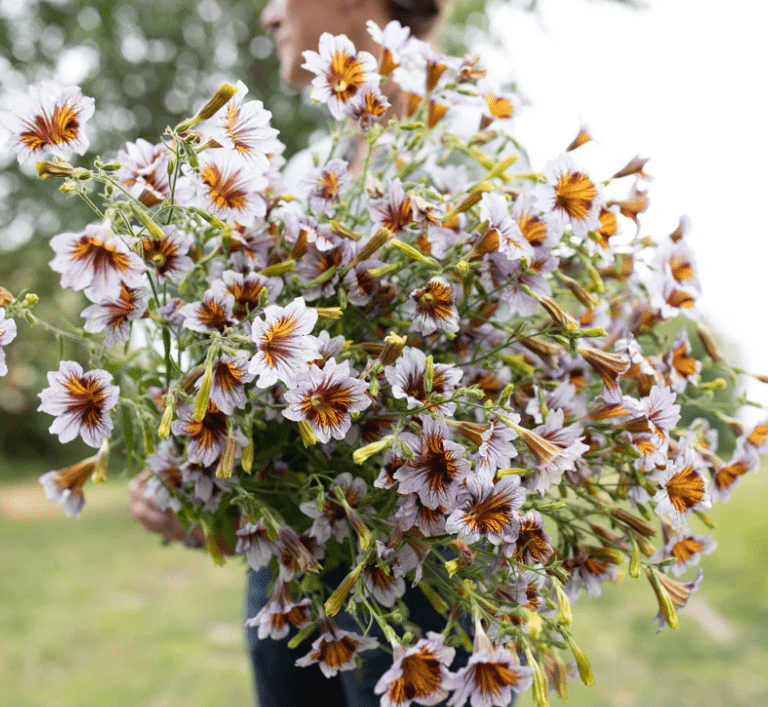
B. Seed collection and storage
Seed collection and storage for painted tongue flowers is a relatively simple process. Once the flowers have faded and dried on the plant, use scissors or pruners to cut off the seed heads. Place the seed heads in a paper bag and allow them to continue drying for a few weeks in a warm, dry area. Once fully dried, gently shake the seed heads to release the seeds into the bag. Store the seeds in a cool, dark place in a sealed container or envelope until you are ready to plant them. Properly stored seeds can remain viable for several years, allowing you to continue growing beautiful Tongue Plant flowers in your garden for seasons to come.
C. Other uses in home and garden
There are a few other uses for collected and stored seeds in the home and garden. You can save money by collecting and storing seeds from your favorite plants to use for future planting. Additionally, you can share your seeds with friends and family or participate in seed exchanges with other gardeners to expand the variety of plants in your garden. Some people also use collected seeds for crafts or as decorations in their homes. Overall, seed collection and storage can be a fun and rewarding activity with multiple benefits for home and garden enthusiasts.
In conclusion, growing Tongue Plant flowers can add a pop of vibrant color to your garden. To ensure success, make sure to plant them in well-drained soil, provide them with plenty of sunlight, and water them regularly. With the right care, you can enjoy a stunning display of colorful blooms that will brighten up your outdoor space. Happy gardening!
Frequently Asked Questions (FAQs)
The best way to plant and care for growing painted tongue is to plant them in well-drained soil with plenty of sunlight. Water them regularly, but be careful not to overwater, as they are susceptible to root rot.
Painted tongue thrives in full sun or partial shade and prefers well-drained soil. They are relatively l
Painted tongue plants typically bloom from late spring to early summer, and their vibrant blooms can last for several weeks.
Painted tongue plants are relatively resistant to pests and diseases, but they can be susceptible to aphids and spider mites. Regular inspection and proper care can help prevent infestations.
Yes, painted tongue plants can be grown in containers as long as the containers have good drainage and the plants receive adequate sunlight and water.
Painted tongue plants can be propagated by seeds or by dividing mature plants in the spring. Sow seeds in well-drained soil and keep them moist until they germinate.
Painted tongue plants are toxic if ingested, so it’s important to keep them away from pets and children. Be cautious when handling the plants and wear gloves if necessary.
Companion plants that pair well with painted tongue include salvia, lavender, coneflowers, and other colorful, sun-loving perennials. These combinations can create a vibrant and visually appealing garden display.
